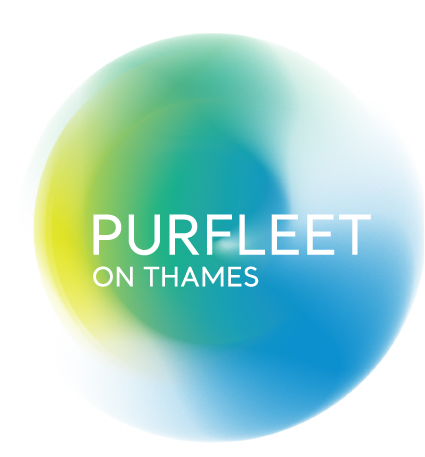Our Story …so far
Fun facts!
Stretching along the foreshore at the foot of the river wall are remains of an ancient forest from over 6000 years ago.
Mammoths once grazed in the Thurrock area and archaeologists recently unearthed the remains of a jungle cat.
People have been in the area since prehistoric times — stone tools, flints, and polished axes have been found, suggesting that the forest that existed was once a hunting ground for Neolithic people.

The land was farmed by both the Romans and Anglo-Saxons.
In the mid-1700’s, the Purfleet Royal Gunpowder Magazine was established as a location for the storage of gunpowder together with a garrison to protect it. Many ships frequented Purfleet to collect gunpowder, including Captain Cook’s H.M.S Adventurer in 1772. To this day, a magazine still remains in Purfleet and is now a heritage museum and hub accessible to the public.
The song, Amazing Grace, by the local Rev. John Newton, was inspired from his near-death boating accident in Purfleet. “Amazing Grace, how sweet the sound that saved a wretch like me!”
Artist J.M.W. Turner made sketches of Purfleet in 1805-08 mainly featuring the Purfleet Royal Powder Magazines. The sketches are now a part of the Tate Britain collection.

Purfleet was a Victorian holiday resort, bringing many people via boat, train, bicycles to enjoy the river and Beacon Hill. Visitors paddled in the River Thames, and enjoyed food and drink supplied by the hotel and cafes.
In Bram Stoker’s novel, ‘The Dracula Story’ Count Dracula purchased Carfax House in Purfleet and relocated there from his Transylvanian castle.
During WW2, Purfleet ran two P.O.W (prisoner-of-war) camps. It dealt with prisoners coming off the ships at Tilbury docks.
Reflecting a strong port and storage history, Purfleet was listed by the Ministry of Food as one of 14 sensitive A-bomb targets in 1955, including for the supply of tea.
16th-century historic farm buildings were converted in 2006 to the now creative hub ‘High House Purfleet’, this includes; The Royal Opera House’s scene-making facility and costume centre, The Backstage Centre that houses the national headquarters for the UK’s Creative & Cultural Skills, and ACME studios consisting of 43 artist studios.




